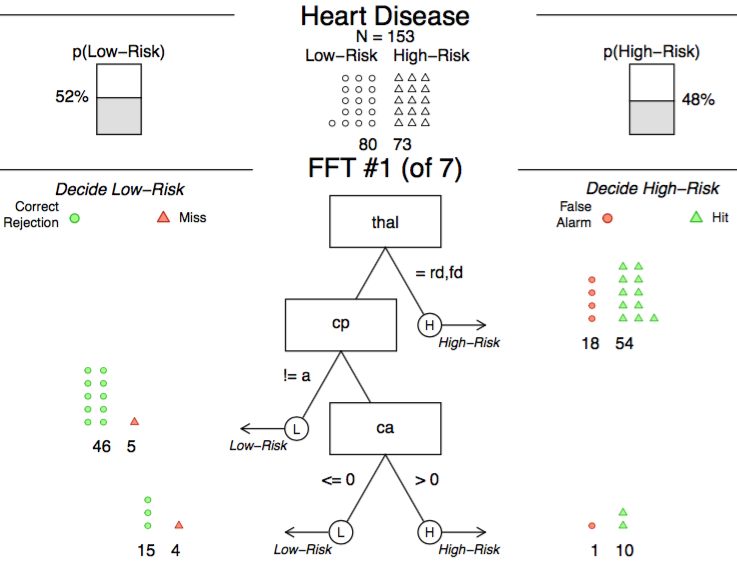Abstract: Fast-and-frugal trees (FFTs) are simple algorithms that facilitate efficient and accurate decisions based on limited information. But despite their successful use in many applied domains, there is no widely available toolbox that allows anyone to easily create, visualize, and evaluate FFTs. We fill this gap by introducing the R package FFTrees. In this paper, we explain how FFTs work, introduce a new class of algorithms called fan for constructing FFTs, and provide a tutorial for using the FFTrees package. We then conduct a simulation across ten real-world datasets to test how well FFTs created by FFTrees can predict data. Simulation results show that FFTs created by FFTrees can predict data as well as popular classification algorithms such as regression and random forests, while remaining simple enough for anyone to understand and use.
Example

Figure: An example FFT (predicting someone's high or low risk for heart disease) drawn by the FFTrees R package.
R package
The current version of FFTrees is available at https://cran.r-project.org/package=FFTrees
To specifically cite a specific version of the R package, an appropriate citation is:
- Phillips, N. D., Neth, H., Woike, J. K., & Gaissmaier, W. (2025). FFTrees: Generate, visualize, and evaluate fast-and-frugal decision trees (R package version 2.1.0, September 3, 2025).
URL https://CRAN.R-project.org/package=FFTrees.
DOI 10.1017/S1930297500006239
 Resources
Resources
- Journal article: doi 10.1017/S1930297500006239 | PDF | html | Google Scholar
- Grow your own FFTs by using the R package FFTrees (on CRAN) or Shiny FFTrees
- Supplementary materials: Open Science Foundation
- Nathaniel’s blog post on FFTrees, a 2016 post, and a YouTube tutorial explain the motivations behind FFTrees.

